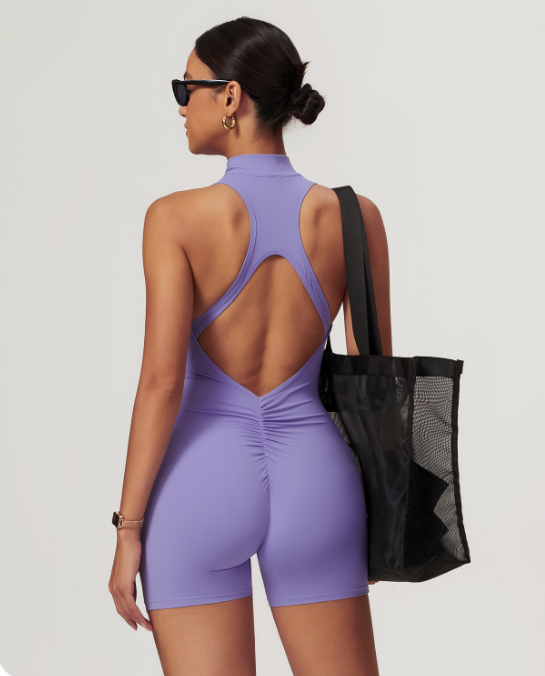Yoga has become an increasingly popular form of exercise and relaxation in recent years. As more and more people embrace this practice, the choice of appropriate yoga clothing becomes crucial. One aspect that often goes overlooked is the Ultraviolet Protection Factor (UPF) of yoga clothes. In this essay, we will explore the question: Do yoga clothes have UPF?
To begin with, it's important to understand what UPF is and why it matters. UPF, similar to the more familiar SPF (Sun Protection Factor) used for sunscreens, indicates the level of protection a fabric provides against the sun's ultraviolet (UV) rays. UV rays can cause various skin problems, including sunburn, premature aging, and even skin cancer. Therefore, having clothing with adequate UPF can be an important line of defense during outdoor activities, including yoga.

When it comes to yoga clothes, not all of them come with built-in UPF. However, many manufacturers are now becoming aware of the need for sun protection in activewear and are starting to incorporate UPF into their designs. These clothes are typically made from specialized fabrics or treated with finishes that enhance their UV-blocking capabilities.
Some common materials used in yoga clothing that may offer UPF include nylon, polyester, and spandex blends. Fabrics with a tighter weave or denser structure tend to provide better UV protection as they allow less UV radiation to penetrate. Additionally, certain manufacturing processes, such as adding UV-absorbing chemicals or applying special coatings, can increase the UPF of the fabric.

One might wonder why UPF is particularly relevant for yoga clothes. Well, many people practice yoga outdoors, whether in parks, on beaches, or at outdoor retreats. Even in indoor studios with large windows, UV rays can still reach the skin. Moreover, yoga often involves various poses and movements that expose different parts of the body, increasing the risk of sun exposure.

It's also worth noting that the UPF rating of a garment can vary. A higher UPF rating indicates better protection. For example, a UPF 50+ garment blocks at least 98% of UV rays, offering excellent protection. However, it's important to ensure that the UPF rating is verified and reliable. Some products might claim to have UPF without proper testing or certification.
When shopping for yoga clothes with UPF, it's advisable to look for labels or product descriptions that clearly state the UPF rating. Additionally, reading customer reviews and researching the brand's reputation for sun protection can provide valuable insights. Brands that are committed to quality and performance are more likely to offer genuine UPF protection.

In conclusion, while not all yoga clothes have UPF, it is becoming a more common feature as consumers become more conscious of sun safety. Investing in yoga apparel with UPF can provide an added layer of protection during your practice, allowing you to focus on your poses and well-being without worrying about the harmful effects of the sun. So, the next time you're in the market for new yoga clothes, consider looking for those that offer UPF and take a step towards a healthier and more protected yoga experience.



